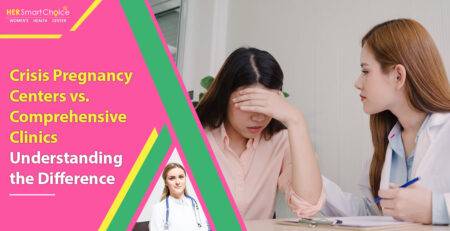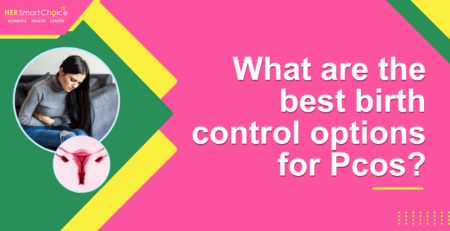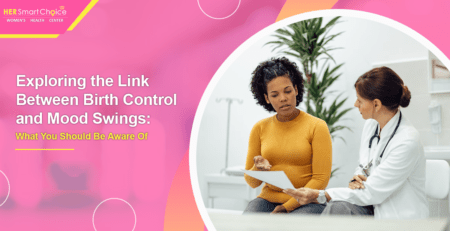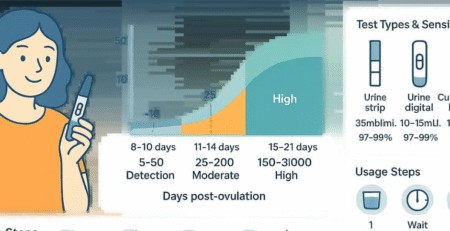Early Pregnancy Test: Your Confident Guide to Early Confirmation

Discovering you’re pregnant as early as possible can truly transform your journey, from planning to care. Early detection pregnancy tests are designed to give you highly sensitive and swift answers, often even before you miss a period. This comprehensive guide will walk you through how these tests work, the best time to test, what impacts accuracy, those first subtle symptom clues, how to choose the right product, and what to do after you get your results. You’ll gain a clear understanding of hCG detection, optimal days past ovulation (DPO) timing, sensitivity levels (mIU/mL), how to interpret faint lines, compare top brands, and understand when to seek medical confirmation. By the end, you’ll feel empowered and confident to choose and use an early detection pregnancy test with complete clarity.
How Do Early Pregnancy Tests Actually Work?
Early detection pregnancy tests use clever science to find tiny amounts of human chorionic gonadotropin (hCG) in your body. They combine special immune reactions with a simple fluid sample, giving you a home-based or lab confirmation just days after implantation. Understanding the science behind hCG detection is key to knowing when to test and how to interpret your results accurately.
What Is hCG and Why Is It So Important for Early Pregnancy?
Human chorionic gonadotropin (hCG) is a special hormone, a glycoprotein, that your body starts producing right after the fertilized egg implants in your uterus. It plays a vital role in supporting your pregnancy by helping to maintain the uterine lining and the developing embryo. For instance, hCG levels typically rise above 25 mIU/mL around 10 days after conception, which is the signal that both home and clinical tests look for. Knowing hCG’s crucial role in early pregnancy helps you understand why test sensitivity is so important and when the best time to test truly is.
Understanding hCG Production and Implantation
The human chorionic gonadotropin (hCG) hormone begins its journey shortly after implantation, produced by the developing placenta. It’s essential for supporting the corpus luteum and keeping your uterine lining healthy for the embryo to grow. hCG levels typically increase rapidly, often reaching over 25 mIU/mL around 10 days post-conception, making it detectable by both at-home and clinical tests.
Cole, L. A., et al., “hCG, its free subunits, and metabolites.” (2008)
This foundational research helps us understand the vital role of hCG in early pregnancy and how it’s detected by various tests.
Urine vs. Blood Tests: What’s the Difference in hCG Detection?
Urine tests, which you use at home, capture hCG molecules in your early morning sample. They use a special strip that shows colored lines when specific antibodies bind to hCG. Blood tests, performed in a clinical lab, measure hCG using advanced methods to give either a qualitative (simple positive/negative) or quantitative (exact mIU/mL number) result. Blood tests can often detect hCG as low as 5 mIU/mL, as early as 7–10 days after ovulation, while the most sensitive home urine tests detect 10–20 mIU/mL around 10–12 days post-conception. This difference helps you decide whether a home test or a lab blood draw is best for your earliest, most reliable answer.
How Do Antibodies Help Your Pregnancy Test Work?
Pregnancy tests rely on clever “monoclonal antibodies” that are specifically designed to latch onto the beta subunit of hCG, creating that visible colored line you see on the test. One antibody is fixed in place on the test, while another carries a tiny dye or gold particle. When hCG is present, it acts like a bridge, connecting these two antibodies and forming a “sandwich” that triggers the colored line. This smart testing method offers quick, accurate detection by using these highly specific antibody interactions, and it helps avoid confusion with other hormones like LH.
How Soon Can an Early Detection Test Confirm Pregnancy After Conception?
The most sensitive tests (those detecting 10 mIU/mL) can pick up hCG as early as 8–9 days past ovulation, which is typically 3–4 days after implantation. Standard tests (25 mIU/mL) usually show a positive result around the time of your first missed period, about 14 days post-ovulation. Since hCG levels roughly double every 48–72 hours, testing too early might give you a false negative if your levels haven’t yet reached the test’s sensitivity threshold. Getting your timing right aligns with how hCG levels rise and helps ensure detection within that crucial early window of embryonic development.
When Is the Best Time to Take Your Early Pregnancy Test for the Most Reliable Results?

To get the most reliable results, it’s all about timing your test perfectly with your body’s hCG production and urine concentration. Testing at the optimal days past ovulation (DPO) and using your first morning urine can help you avoid common false negatives. Choosing the right sensitivity level and following best practices will ensure you get accurate, early confirmation.
How Many Days Past Ovulation (DPO) Should You Wait Before Testing?
For ultra-sensitive tests, waiting at least 8 DPO offers a good balance between early detection and accuracy. For most home tests, 10–14 DPO is ideal. At 8–9 DPO, tests with 10 mIU/mL sensitivity can detect up to 50% of pregnancies, and this rises to over 90% by 10 DPO. Waiting until a missed period (14 DPO) boosts accuracy to over 99%. Aligning your test timing with the expected doubling of hCG levels will give you trustworthy results and help reduce any retest anxiety.
Why Is First Morning Urine Best for Early Testing?
Your first morning urine is recommended because it contains the highest concentration of hCG. This is because your fluid intake and kidney filtration overnight allow hormones to concentrate. Testing with this sample significantly improves the detection of low hCG levels and helps minimize the chance of a false negative. Collecting urine right after you wake up ensures consistent dilution and matches the sensitivity requirements of the test.
How Does Test Sensitivity (mIU/mL) Impact When You Can Test?
Sensitivity, measured in milli-international units per milliliter (mIU/mL), directly tells you how early a test can identify hCG. The table below shows how common sensitivities relate to your detection window:
| Test Sensitivity (mIU/mL) | Approximate Detection Window | What This Means for You |
|---|---|---|
| 10 | 8–10 DPO | Your earliest chance for a home detection, offering high confidence even before a missed period. |
| 20 | 9–11 DPO | A great balance between early detection and often a more budget-friendly option. |
| 25 | 10–14 DPO | The standard threshold, providing very high reliability around the time your period is expected. |
Choosing a test with a lower mIU/mL sensitivity means you can get results sooner, but these tests might come with a slightly higher price tag. Understanding this relationship helps you choose based on how early you’re hoping to confirm your pregnancy.
What Are the Signs You Might Need to Retest After a Negative Result?
Even with perfect timing, a negative result at 8–10 DPO might just mean your hCG levels are still rising. You should consider retesting if you experience any of the following:
- Your period is still absent 24–48 hours after your initial test.
- You continue to experience persistent symptoms like nausea or fatigue, especially past your expected period date.
- You have irregular cycles, which could mean your conception timing was different than expected.
Waiting 2–3 days before retesting allows hCG levels to double, significantly increasing the reliability of your next result. If you’re still unsure, a quantitative blood test can provide a definitive measurement.
How Accurate Are Early Detection Pregnancy Tests, and What Affects Their Reliability?
Early detection tests can be remarkably accurate, reaching up to 93% accuracy several days before a missed period, and over 99% on the day your period is expected. Factors like how diluted your urine is, the test’s expiration date, and a rare phenomenon called the “hook effect” can influence accuracy. Understanding these variables will help you interpret your results correctly and ease any anxiety.
Understanding Early Detection Test Accuracy
Early detection pregnancy tests offer impressive accuracy, with rates up to 93% several days before a missed period, and over 99% on the day your period is due. However, factors such as urine dilution, test expiration, and the rare hook effect can influence how accurate your results are.
American Pregnancy Association, “Pregnancy Tests” (2024)
This information is vital for understanding just how reliable early pregnancy tests can be and what might affect their accuracy.
What Accuracy Can You Expect Before and After a Missed Period?
Before a missed period (typically 4–6 days early), with proper timing and a sensitive test, you can expect 76–93% accuracy. On the day your period is due, accuracy soars to over 99%. Blood tests maintain over 99% accuracy as early as 7–10 days post-conception. These high rates assume you’ve used the test correctly and with first morning urine. The accuracy improves significantly after a missed period because hCG levels are much higher, making them easier for the test to detect.
What Causes Those Tricky False Negative and False Positive Results?
False negatives most often happen when you test too early, use diluted urine, or make a user error like not immersing the test long enough. In very rare cases, extremely high hCG levels can cause the “hook effect,” where the test’s antibody binding sites become overwhelmed, preventing a clear line from forming. False positives can occur from residual hCG after a recent miscarriage or from certain fertility treatments that contain hCG. Knowing about these possibilities helps you decide when to retest or when to seek medical advice.
How Do Diluted Urine and Expired Tests Affect Your Results?
If your urine is diluted—which often happens if you drink a lot of fluids or test later in the day—the hCG concentration might drop below the test’s detection threshold, increasing your risk of a false negative. Expired tests are also unreliable because the antibodies and chemicals inside can degrade, compromising the test’s integrity. Always double-check the expiration date and use your first morning urine for the best possible test conditions. Doing so directly boosts your test’s reliability and helps prevent misleading outcomes.
How Can You Troubleshoot Ambiguous or Faint Test Lines?
A faint line often means your hCG levels are just barely above the test’s sensitivity threshold. To get a clearer answer:
- Retest with your first morning urine in 48 hours, allowing hCG levels to double.
- Always confirm the line’s presence within the recommended read window (usually 5–10 minutes).
- Avoid reading the test after the specified time to prevent confusion with evaporation lines.
Following these steps can help clarify your results and reduce misinterpretation, empowering you to move forward with greater certainty.
What Are the Earliest Signs and Symptoms of Pregnancy Before You Even Test?

Even before hCG levels are high enough for a test to detect, your body might give you subtle hints that pregnancy is on its way. Recognizing these early indicators can help guide your decision on when to test and reduce that period of uncertainty.
Which Symptoms Often Appear Before a Missed Period?
Common symptoms you might notice before your period is due include feeling unusually tired, mild nausea, tender breasts, needing to urinate more often, and a heightened sense of smell. You might also experience implantation cramping or light spotting around 6–12 days post-ovulation. While these signs can sometimes overlap with premenstrual symptoms, their persistence beyond your expected period date often suggests pregnancy. Paying attention to these clues can help you time your test for optimal sensitivity.
How Can You Tell the Difference Between Implantation Bleeding and Your Period?
Implantation bleeding typically appears as very light pink or brown spotting, usually lasting only 1–3 days, and often without the heavy flow or clotting you’d expect from a period. Period bleeding, on the other hand, is usually heavier, brighter red, and lasts 3–7 days. Implantation cramping also tends to be milder and shorter. Recognizing these distinctions can help manage your expectations and might prompt you to test earlier if the spotting aligns with typical implantation timing.
How Does Understanding Early Symptoms Help You Time Your Test?
Connecting your symptoms—like persistent nausea or unusual spotting—to your days past ovulation (DPO) can help you estimate when hCG levels might start to rise and peak. For example, if you notice implantation spotting or feel unusually fatigued around 10 DPO, a sensitive test the next morning is more likely to detect hCG. Aligning your body’s clues with the test’s sensitivity can reduce false negatives and help you plan a more precise testing schedule.
How Do You Choose the Best Early Detection Pregnancy Test for Your Unique Needs?
Choosing the right test means finding a balance between sensitivity, how easy it is to use, cost, and how clear the results are. Comparing at-home urine strip tests, digital readers, and lab-based blood tests will help you pick the ideal method for your early, reliable confirmation.
What Are the Key Differences Between Urine and Blood Pregnancy Tests?
Urine tests offer the convenience of testing at home, providing immediate visual or digital results, with sensitivities ranging from 10–25 mIU/mL. Blood tests, while requiring a clinic visit, can give you precise quantitative hCG levels, detecting as low as 5 mIU/mL. Urine tests look for free hCG in your excreted fluid, while blood tests measure the total hCG circulating in your bloodstream. Your choice depends on how early you need confirmation, your budget, and whether you want an exact hormone measurement.
Which Brands Offer the Most Sensitive Early Detection Tests?
Top brands like Clearblue, First Response, Easy@Home, Natalist, and Pregmate offer tests with impressive sensitivities, typically ranging from 10 to 15 mIU/mL. These brands often incorporate advanced antibody technology and digital displays for easier, clearer interpretation.
- Clearblue boasts detection at 10 mIU/mL, often with a clear digital “pregnant/not pregnant” display.
- First Response Early Result stands out with an ultra-early detection threshold of 6.3 mIU/mL.
- Easy@Home provides cost-effective strips at 10 mIU/mL, perfect for bulk testing.
These options empower you with early detection within days of implantation and can suit various budgets.
How Do Sensitivity Levels Compare Across Popular Pregnancy Test Brands?
| Test Brand | Sensitivity (mIU/mL) | Detection Window |
|---|---|---|
| First Response Early Result | 6.3 | 6–8 DPO |
| Clearblue Early | 10 | 8–10 DPO |
| Easy@Home Strips | 10 | 8–10 DPO |
| Natalist Digital | 15 | 9–11 DPO |
| Pregmate Strips | 10 | 8–10 DPO |
Comparing these sensitivities clearly shows how early each brand can detect hCG. Opting for a lower threshold means you can get confirmation sooner, though it might come with a slightly higher cost per test.
What Key Features Should You Look for in a Reliable Early Detection Test?
When you’re choosing a test, keep these priorities in mind:
- Digital vs. Strip: Digital displays can eliminate the stress of interpreting faint lines.
- Clear Read Window: Look for tests with short, precise timeframes to reduce confusion from evaporation lines.
- Ease of Use: Ergonomic designs and straightforward instructions make the process simpler.
- Cost and Quantity: If you plan to test multiple times, bulk strip packs can be more economical.
These features will help ensure accurate interpretation, minimize user error, and lead to timely pregnancy confirmation.
What Should You Do After Receiving Your Early Detection Pregnancy Test Results?
Whether your result is positive or negative, knowing what to do next is crucial for your care, retesting, or medical consultation. Having clear steps will streamline your decision-making and health planning.
How Should You Confirm a Positive Pregnancy Test with Your Healthcare Provider?
Once you have a positive home test, schedule an appointment with your OB-GYN or midwife. They can confirm your pregnancy with a quantitative hCG blood test and, when appropriate, an ultrasound. This clinical evaluation helps verify your gestational age, rule out complications like ectopic or molar pregnancy, and officially begin your prenatal care journey. Early medical confirmation supports healthy outcomes and provides you with personalized guidance.
What Are the Recommended Next Steps After a Positive Result?
After confirming your pregnancy, it’s time to start taking prenatal vitamins that contain folic acid. Schedule your initial prenatal visit, and discuss any lifestyle adjustments, such as maintaining balanced nutrition and moderate exercise. Tracking your hCG levels and attending routine ultrasounds will help monitor your baby’s health. These actions are vital for promoting healthy placental development and reducing the risk of neural tube defects.
How Should You Proceed After a Negative Result but Still Suspect Pregnancy?
If your symptoms persist or your period remains absent after a negative test, retest in 48–72 hours, or consider getting a quantitative blood test for a definitive measurement. It’s also wise to consult a healthcare provider to evaluate any irregular cycles, potential hormone imbalances, or possible early pregnancy loss. Clear medical guidance can address underlying concerns and help you plan for future conception efforts.
Common Misconceptions and Troubleshooting Tips for Early Detection Tests

It’s easy to misread faint lines, confuse evaporation streaks, or misunderstand the rare “hook effect,” which can lead to unnecessary worry. Being aware of these common pitfalls and knowing when to retest or seek medical advice will boost your confidence and reduce stress.
Can Evaporation Lines or the Hook Effect Lead to Misleading Results?
Yes, they can. Evaporation lines are colorless or gray marks that appear after the recommended read window and can sometimes be mistaken for a faint positive. The “hook effect,” though rare, occurs when extremely high hCG levels overwhelm the test’s antibodies, potentially causing a false negative. Always read your results within the specified time (usually 5–10 minutes) and consider retesting if your hCG levels are unusually high or your symptoms intensify.
When Is It Best to Retest or Seek Medical Advice?
You should retest if you see a faint line, if you tested before 12 DPO, or if you suspect your urine was diluted. Seek professional medical evaluation if you experience bleeding, severe cramping, or if your test results are consistently conflicting. Medical advice ensures an accurate diagnosis of any early pregnancy complications or other reproductive health issues.
How Does Fertility Tracking Connect to Early Pregnancy Testing?
Fertility tracking involves recording your basal body temperature, observing changes in cervical mucus, and using ovulation predictor kits (OPKs) to estimate your ovulation and conception timing. Aligning this valuable data with your test’s sensitivity significantly improves early detection accuracy and takes away much of the guesswork. Integrating cycle tracking empowers you with informed testing strategies and supports your overall conception planning.
Confirming pregnancy at the earliest possible stage empowers you to make informed health decisions and plan your care with confidence. By understanding how hCG detection works, choosing the right test sensitivity, timing your test appropriately, and accurately interpreting your results, you gain peace of mind in early pregnancy detection. Trust these guidelines to confidently navigate your next steps—whether it’s retesting, seeking clinical confirmation, or beginning your prenatal planning—and move forward with clarity and reassurance.
This article was written and reviewed by the editorial team at Her Smart Choice, a trusted provider of women’s health services with licensed professionals across Los Angeles, CA.
About Her Smart Choice
Her Smart Choice is dedicated to providing comprehensive and accessible women’s health services. With a team of licensed professionals across Los Angeles, we offer expert care and reliable information to support your well-being. For more information, visit Her Smart Choice.
Our medical authority is backed by our team of experienced and licensed healthcare providers who are committed to evidence-based practices and patient-centered care.










